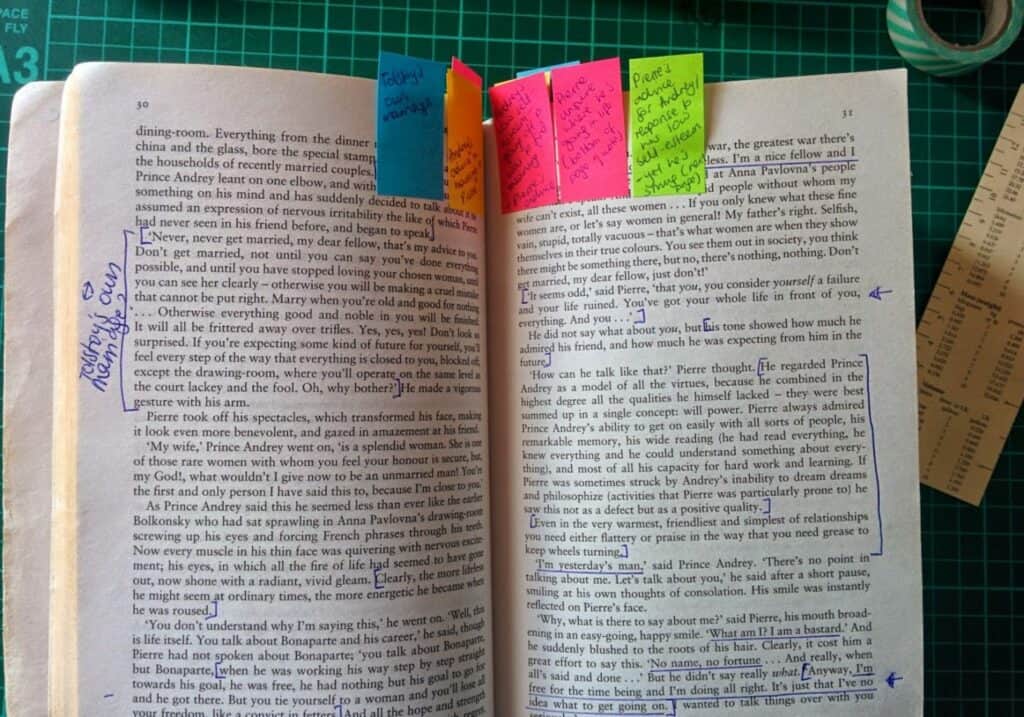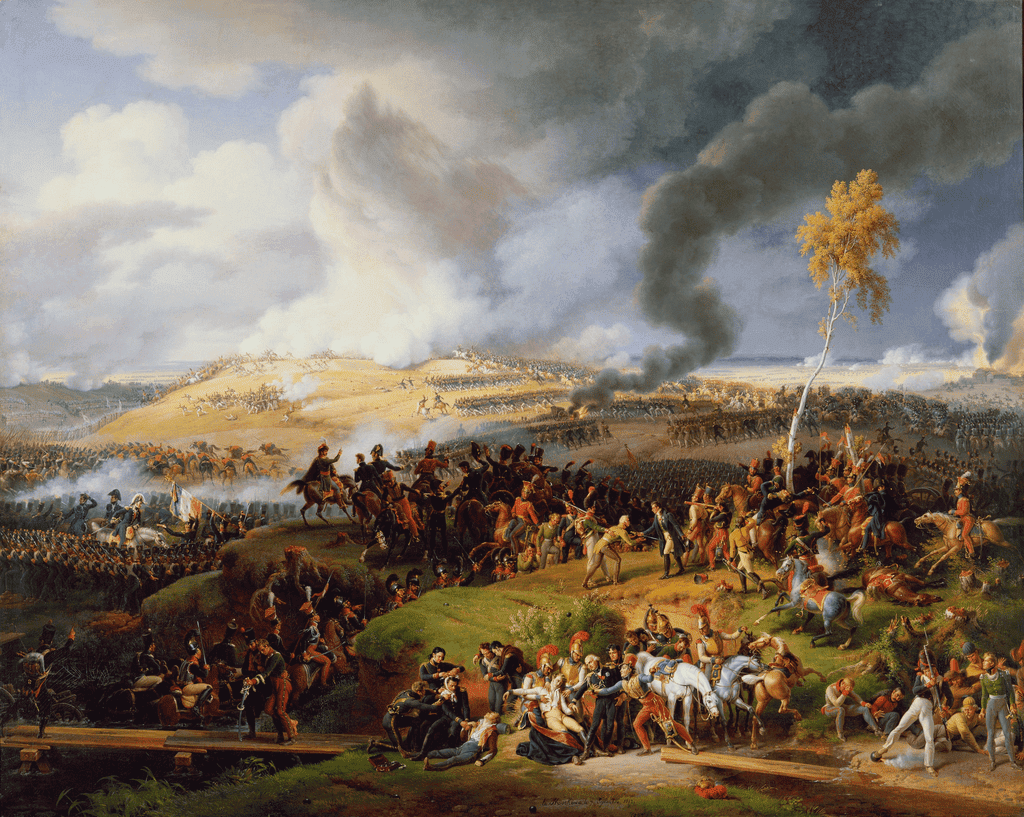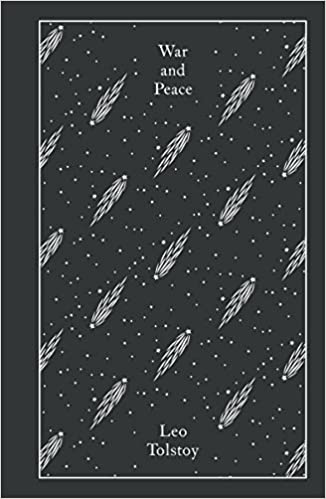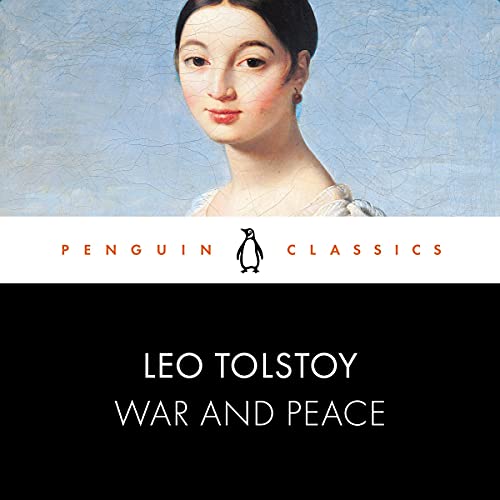How to read War and Peace (and what to know before you start)
I only share books I know and love. If you buy through my links, I may earn a commission (learn more).

“The misery of nations is caused not by particular persons, but by the particular order of Society under which the people are so bound up together that they find themselves all in the power of a few men, or more often in the power of one single man: a man so perverted by his unnatural position as arbiter of the fate and lives of millions, that he is always in an unhealthy state, and always suffers more or less from a mania of self-aggrandizement.”
From Tolstoy’s pacifist writings, “Thou Shalt Not Kill”, added to this post in 2022 in light of Russia’s war against Ukraine.
It’s no secret that I love War and Peace. It’s the book that inspired this blog, helped me to overcome anxiety better than perhaps anything else, and has taught me plenty of life lessons.
I was first recommended the book by a friend’s mum as a teenager, and I didn’t really think all that much about it… it was just another long book. If I had first come across it now, though, I would’ve felt pretty intimidated… it’s 1300 pages long, for goodness sake.
But the thing is, reading War and Peace doesn’t have to be a struggle. It can actually be pretty enjoyable.
Since I first read it in 2012, I’ve read War and Peace five or so times, including for my undergrad dissertation. I’m definitely not a Russian literature expert (I’m sure they’d have a lot of things to comment on my writing from the last few years.) I just like Tolstoy’s writing a lot.
I’ve shared before why you should read War and Peace, but how should you read it? And what’s the best way to get started and keep going?
If you’ve been planning to read the almighty Russian tome, this guide to War and Peace is for you…
What to know before reading War and Peace
What is War and Peace about? It’s a long, long book about the French invasion of Russia and the impact of the Napoleonic era on Tsarist society, told through the stories of five Russian aristocratic families (who have a lot of difficult-to-remember names). It’s also just one of the best books about life.
What age should you be to read War and Peace? It’s not a graphic or violent book, but it isn’t exactly easy-reading. I first read it when I was about 15 or 16, and I think any earlier would’ve been a bit pointless for me. Any age that you actually feel like reading an enormous book of Russian literature is probably the perfect age.
How long is War and Peace? My Penguin translation by Anthony Briggs is 1424 pages as a paperback, including chapter lists and summaries. The actual text is about 1200-1300 pages.
Is War and Peace hard to read? Sort of. The most difficult thing is keeping track of characters. But it’s probably not as hard to read as you think, especially if you find a translation you like.
Who should read War and Peace? Anyone who feels like reading 1300 pages about the Napoleonic invasion of Russia, aristocratic families, and life.
How long does it take to read War and Peace? Usually, it takes me about a month. The shortest time I’ve read it in is twelve days, but that was when I was a university student on summer vacation with a lot of free time. Don’t pressure yourself. It’s not a race and there are no prizes.
My guide on how to read War and Peace – and actually finish it
1. Choose a good translation
There are several different translations of War and Peace available, and each one has its pros and cons. There’s no right translation of War and Peace to read – or one best choice for everyone.
The best translation is the one that you’ll actually read and enjoy. Honestly (and Russian lit experts, please don’t hate me), I think this means more than reading the most faithful translation of Tolstoy’s original Russian.
If possible, treat yourself to some time sitting in the comfy chair of a bookshop and read the first few pages of each translation available.
Here’s my comparison of the best translations of War and Peace to help you choose the best one for you. I love the Anthony Briggs translation, which is available from Penguin as a paperback, or as this beautiful clothbound hardcover:
2. Choose a format that works for you
You’re not stuck with lugging a heavy 1300-page copy of War and Peace around with you for a month if you want to read it.
Listening to an audiobook of War and Peace is a good option that lots of readers enjoy. You can listen to it while you travel, walk, or go about errands. That said, War and Peace can get confusing pretty fast. So you’ll want to make sure you can pay attention to avoid getting lost (I know I can be very easily distracted when listening to audiobooks).
This is the audiobook of the Briggs translation (my favourite) of War and Peace:
If you don’t care about reading an official, unabridged translation, you can also listen to the popular BBC Radio 4 full-cast dramatisation of War and Peace on Audible.
If you read a full version, also keep in mind that War and Peace is a book for which you’ll probably need to flick back and forth between pages while reading – whether to remember what’s going on and who Princess so-and-so is.
Especially on my first read to keep track of characters, I relied a lot on the character lists and chapter summaries in the Anthony Briggs translation.
Another option to save your spine is reading an ebook edition, which also gives you the opportunity to skip back and forth to character lists and the like, or search for the first mention of a character or other plot moments.
3. Think about why you want to read War and Peace
I was first motivated to read War and Peace simply because someone told me they thought I’d like it. On my re-reads, I’ve been motivated to understand more about the book, view it from new perspectives, and enjoy again how it makes me feel calmer and more in-tune with the world. I know I have a lot more to learn from the book.
You may have been recommended the book by a friend, or perhaps you just want to say you’ve read it and not be telling a white lie. Perhaps you’ve seen it on screen and enjoyed it. You might have read a few quotes and realised it didn’t seem totally pretentious and unreadable. Or maybe you want to find out what War and Peace is actually about.
Whatever your reason, use it as motivation to make time for it and finish it. If you’re still not sure whether to read War and Peace or not, here are my reasons why I think you should consider it.
4. Look for the character (or characters) you can relate to
The most important thing I realised when I first read War and Peace was that I could actually relate to it. The characters seemed like real, flawed people.
For me, I have always related best to Pierre Bezukov. He’s awkward, bumbles his way through most social situations, but also has a big heart. There’s also Natasha Rostov’s vibrant sense of life, Andrei’s disillusionment with the world, and Sonya’s humility, though.
There are a lot of characters in War and Peace (about 580). With all of the different characters we meet, there are plenty of opportunities to learn from their successes and failures – and understand a bit more about ourselves in the process.
“Pierre was right when he said that one must believe in the possibility of happiness in order to be happy, and I now believe in it. Let the dead bury the dead, but while I’m alive, I must live and be happy.”
While there are hundreds of characters in War and Peace, I think Tolstoy wants us to find the ones who really matter to us. I’d say it’s like differentiating between friends and one-time acquaintances in our own lives.
5. Be patient… reading War and Peace can take a while
Whether you choose to read a chapter a week, a chapter a day, or to do away with all targets whatsoever, read War and Peace in your own way.
Enjoy the journey, be patient with yourself, and give yourself time to take everything in. You won’t get any awards for reading it quickly.

6. It’s fine to switch to a different translation
If you’re really struggling to read War and Peace and sitting down with it feels like pulling teeth, don’t keep going. Instead, try a different translation. See how you get on with another translation for a few chapters to give yourself the best shot at finishing (and more importantly, enjoying) the book.
7. Keep notes, read summaries, or cover your book with Post-its (whatever works for you)
On my first reading of War and Peace I simply read it through. I didn’t make notes, but I did refer to the chapter summaries at the back of my edition when I got confused. To keep track of the characters, I used my book’s character list.
On the next reading, I underlined favourite passages and made some notes in the book.
Another time, I covered my book with Post-its to categorise quotes I love, topics I’d like to write about, and links to other books.
Do whatever works for you to read and absorb the book.
8. Honestly, just treat it like any other book
War and Peace is just a book. How would you go about reading any other book? Do the same with Tolstoy (ok, and perhaps persevere a little more).
“If we admit that human life can be ruled by reason, then all possibility of life is destroyed.”
If you’re reading War and Peace for the first time, I envy you! It’s brimming with wisdom about life and being human.
While I would say it is too long in places (ahem, the essays at the end), there’s so much to mull over and compare to our own lives. For me, it’s like a handbook for life, both in helping me realise what to do and what definitely not to do.
Tolstoy knew all about failure in love, work, friendships and ambition (and much more). He wasn’t perfect – certainly not towards his wife – and neither are his characters. I think this all amounts to a great deal of authenticity.
If you want to read War and Peace with more depth and background information, you might like:
- Tolstoy: A Russian Life (2011) by Rosamund Bartlett is my favourite biography of Tolstoy.
- Andrew D. Kaufman’s Give War and Peace a Chance: Tolstoyan Wisdom for Troubled Times (2014) makes a great case to give the book a go.


